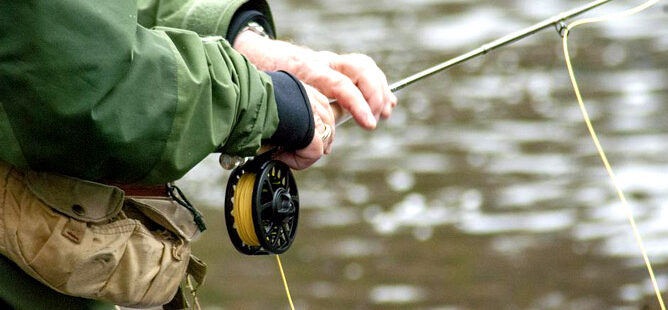A Brief Overview of Fly Fishing
The term ‘fly fishing’ comes from the artificial lure used in this type of angling. It resembles a real fly or a similar insect. When this artificial lightweight lure enters the water, the fish perceive it to be the real insect. If the angler releases the lure in the water correctly, it can attract some good-quality fish like trout. Just when the fish tries to take a bite of the lure it is caught by the angler.
Owing to the fascinating motion of fly casting, fly fishing is among the most beautiful forms of angling. Many of the anglers consider this activity as some sort of meditation. In several parts of the world, many individuals practice fly fishing as a catch-and-release activity.
It means that the angler releases the fish into the water immediately after catching it. This prevents the fish species from going extinct and preserves their population for the coming generations.
Normal angling and fly fishing
One main difference between normal angling and fly fishing is the fishing line. In fly fishing, the line serves as the weight casting the bait. The casting techniques used in this case is quite different from normal angling. Fly fishing is a method of casting the line.
It doesn’t place too much significance on the lure’s weight. Generally, this weight is useful for pulling line from the reel during the forward motion of a cast.
Saltwater fishing vs freshwater fishing
Usually, the anglers use dry flies that are similar to the ones on the surface of the water for fly fishing. In some cases, anglers use nymphs imitating the underwater insects. They’re often the imitations of baitfish or the organisms that are similar to it. One can practice fly fishing in saltwater as well as freshwater.
If the choice is freshwater, the anglers use fly fishing in rivers, streams, creeks, ponds, or lakes. The ones who choose saltwater can go fly fishing in flats. These are shallow areas of the oceans located in regions such as the Caribbean.
Single hand casting
A fly is too light in fly fishing and doesn’t usually serve as the cast’s weight. A fly line is heavier than a normal line used for angling. It has to be cast, therefore, with the right technique. A loop form transports the fly to the position that the angler desires.
In a basic form, the angler whisks back the line over the shoulder. The casting technique that’s used the most in fly fishing is single hand casting. As the name implies, the angler executes the cast with only one hand. The use of overhead cast technique is common among the anglers.
Double hand casting
Double hand or spey casting is usually done in larger rivers. It’s obvious from the name that the anglers use both hands in this casting technique of fly fishing. They use longer and heavier rods in this fly fishing technique. The large roll cast was developed in the region surrounding the River Spey in Scotland. It was used to fish for salmon in big rivers.
This technique of casting requires no space behind the caster. Hence, it was used when the overhead cast was made impossible because of high banks. Today, the fly fishing enthusiasts use two-handed rods for other species in many more situations.

